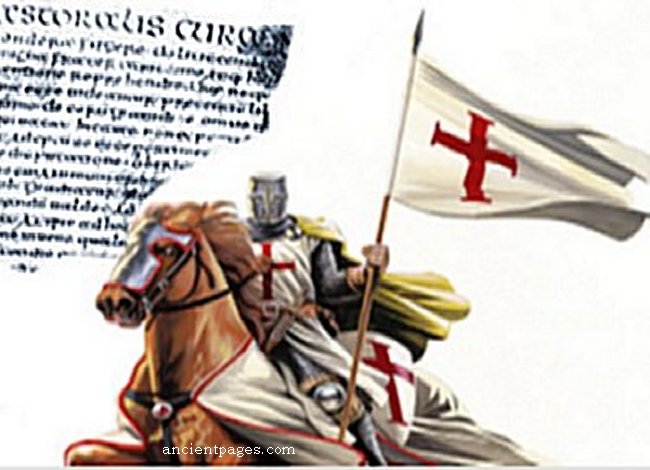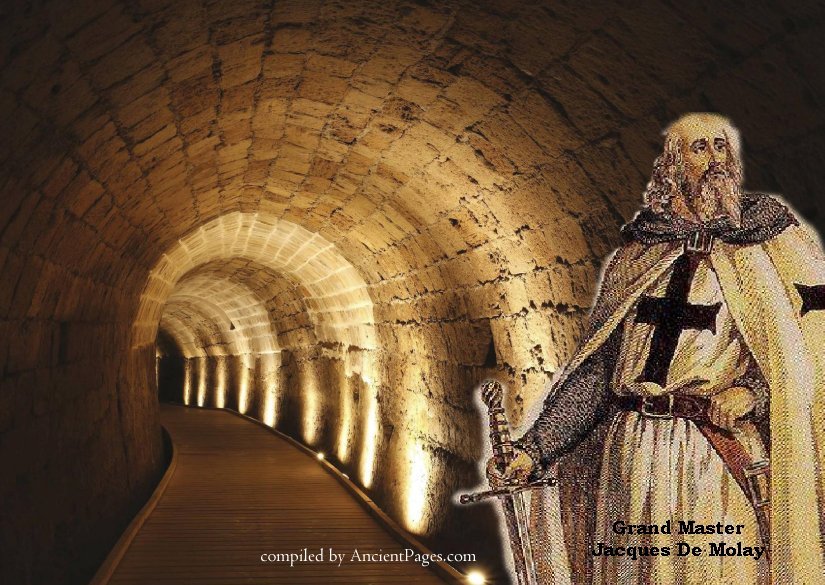Knights Templar – Among The Most Wealthy And Powerful Of The Western Christian Military Orders
A. Sutherland - AncientPages.com - Secrets and legends surround Knights Templar. They were a powerful, wealthy medieval organization that has fascinated historians, writers, and the public for many centuries.
According to one Muslim chronicler, the Knights Templar Order represented "the fiercest fighters of all the Franks."
Men of the Temple imagined in the 19th century . Artwork from 1870. Author unknown - Münchener Bilderbogen - Public domain
Their Order was one of the most potent monastic societies in Europe and the military pride of the church during the Crusades.
In 200 years, they created the most crucial Christian organization in the world. Most prominent monarchs of medieval Europe, who considered themselves powerful, feared someone else even more powerful – the Knights Templar. They symbolized the holy fight of Christians against infidels and heretics.
It was a great honor to serve this Order:
"Dear mother and father, I am writing to assure you that I am quite well. I apologize for making you worry and for creating more distance between us. I know that it was difficult for both of you when I left home to live on the Lord's manor.
However, it was best for my future that I train to become a knight. My refined skills as a warrior have allowed me to join the noble Order of the Knights of Templar…" (as it was written in A Higher Calling June of 1135)
But life within the closed doors of their monasteries was not easy. There was a strict law, which the Templars were obliged to follow. It did not allow them to abuse alcohol, to lead a hasty life. They had to respect celibacy values, participate in charity, and live in poverty.
They gathered in the chapel two hours before sunrise every day to pray. Then, the knights checked the state of their armor, and after the mass, they ate a modest breakfast and could spend time on conversations.
Already in the times of the existence of the Knights Templar Order, there were numerous legends of proud knights clad in white, who either spent every day hiding behind the walls of their strongholds or fought in battles but never feared death.
The brotherhood was formed and adopted the name of the Poor Knights of Christ. Hugues de Payns was the first Master and founder of the Order of the Temple.
In 1118 AD (about twenty years after the founding of the Kingdom of Jerusalem by Godfrey of Bouillon (1060 –1100), a Frankish knight and one of the leaders of the First Crusade from 1096, Hugues de Payns ("of the pagans") led a group of nine other French noblemen to the Holy Land. They settled next to the alleged site of King Solomon's Temple.
They had to guard the roads leading to Jerusalem and protect Christian pilgrims traveling to the holy places, especially between Jerusalem and St. Jean d'Acre.
Their motto was: chastity, poverty, and obedience. The Order was ordained at Troyes, France, on January 13, 1129.
Road To One Of The Greatest Powers In Europe
At the beginning of their activity, the Templars had limited resources, and the knights were often hungry. The Templars started as poor monks, but soon their assets began to grow, and with time, the Order became wealthy and powerful. King of Jerusalem Baldwin II gave the Templars a part of his palace in 1120 and a church on a hilltop.
Soon, however, the situation changed, and the Order began to magnify their resources to the point that they became wealthy and also powerful.
This Order was to become the Pope's elite soldiers, and he gave them numerous privileges to make them independent and influential.
The Templars did not have to pay taxes and had their chaplains: The power of these monks was above the authorities. Their centers were spread all over Europe and gave loans in one place, and the borrower could have paid the debt in a completely different place.
Popes and kings coveted their fame and riches, and their secret rituals (or perhaps even more than only rituals) eventually contributed to the Templars' slow but ultimate downfall.
On Friday, October 13 of 1307 (the superstition of Friday the 13th), Filip IV the Fair, King of France (also called the Iron King), ordered the arrest of several hundred Knights Templar, including their grandmaster Jacques de Molay; mass acquisitions and arrests took place. The Templars were formally charged with heresy, financial corruption, dishonesty, and secrecy.
All their assets were confiscated, and members were tortured and burned alive at stake (including de Molay). Philip IV also set European leaders against the Templars and Pope Clement V's decision to end the Order's activities.
In many hearts and minds, the Order, whose fate found its tragic final more than 700 years ago – is still alive. Many people believe that the Order still exists, although, in 1314, it was officially dissolved, and its leaders burned.
Written by – A. Sutherland AncientPages.com Staff Writer
Updated on August 12, 2022
Copyright © AncientPages.com All rights reserved. This material may not be published, broadcast, rewritten or redistributed in whole or part without the express written permission of AncientPages.com
Expand for referencesReferences:
Pernoud R. The Templars: Knights of Christ
Order of the Temple of Solomon
Jones D. The Templars: The Rise and Spectacular Fall of God's Holy Warriors
More From Ancient Pages
-
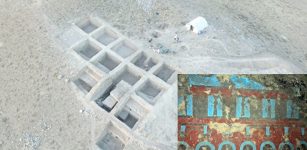 First Look At Mysterious 2,700-Year-Old Underground Frescoes Hidden Inside An Urartu Structure
Archaeology | Oct 6, 2022
First Look At Mysterious 2,700-Year-Old Underground Frescoes Hidden Inside An Urartu Structure
Archaeology | Oct 6, 2022 -
 Modern Humans Inherited DNA From A Mysterious And Unidentified Ancestor
DNA | Aug 7, 2020
Modern Humans Inherited DNA From A Mysterious And Unidentified Ancestor
DNA | Aug 7, 2020 -
 Huge Over 1,000-Year-Old Beautiful Stone Murals Discovered In Central China
Archaeology | Oct 14, 2022
Huge Over 1,000-Year-Old Beautiful Stone Murals Discovered In Central China
Archaeology | Oct 14, 2022 -
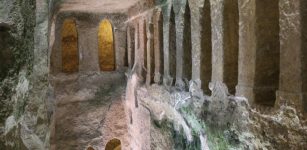 Largest In Europe Underground Church Of Saint-Jean of Aubeterre Built By 12th Century Benedictine Monks
Featured Stories | Feb 12, 2016
Largest In Europe Underground Church Of Saint-Jean of Aubeterre Built By 12th Century Benedictine Monks
Featured Stories | Feb 12, 2016 -
 Can Early Stone Tools Offer Proof Our Ancestors Were Becoming Human, Both Mentally And Culturally?
Archaeology | Jul 7, 2022
Can Early Stone Tools Offer Proof Our Ancestors Were Becoming Human, Both Mentally And Culturally?
Archaeology | Jul 7, 2022 -
 2nd Century Roman Temple Unearthed In Aswan, Egypt
Archaeology | Feb 23, 2018
2nd Century Roman Temple Unearthed In Aswan, Egypt
Archaeology | Feb 23, 2018 -
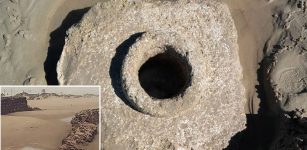 Fragments Of 50-Mile-Long Roman Aqueduct And Road In Cádiz, Spain Revealed By Storm
Archaeology | Mar 10, 2018
Fragments Of 50-Mile-Long Roman Aqueduct And Road In Cádiz, Spain Revealed By Storm
Archaeology | Mar 10, 2018 -
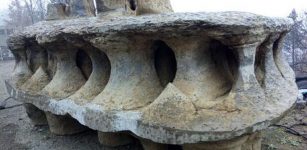 Curious Giant Shaped Rock In China – An Ancient Man-Made Construction Or Natural Formation?
Featured Stories | Jun 26, 2017
Curious Giant Shaped Rock In China – An Ancient Man-Made Construction Or Natural Formation?
Featured Stories | Jun 26, 2017 -
 Never-Before-Seen Object Found In The Skull Of Powerful Ancient Ruler Raises Many Questions
Featured Stories | Nov 12, 2024
Never-Before-Seen Object Found In The Skull Of Powerful Ancient Ruler Raises Many Questions
Featured Stories | Nov 12, 2024 -
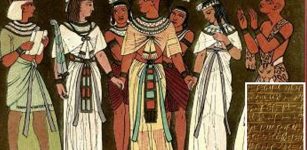 Asenath And The Golden Tablet That Changed Her Destiny
Biblical Mysteries | May 10, 2019
Asenath And The Golden Tablet That Changed Her Destiny
Biblical Mysteries | May 10, 2019 -
 The Face Of The Amarakarei – Remarkable Enormous Face Caved Into Stone Cliffs In Peru
Places | Nov 20, 2015
The Face Of The Amarakarei – Remarkable Enormous Face Caved Into Stone Cliffs In Peru
Places | Nov 20, 2015 -
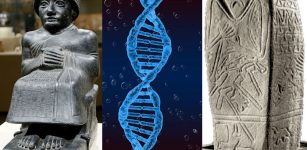 Ancient DNA Provides Comprehensive Genomic History Of The “Cradle Of Civilization”
Archaeology | Oct 10, 2022
Ancient DNA Provides Comprehensive Genomic History Of The “Cradle Of Civilization”
Archaeology | Oct 10, 2022 -
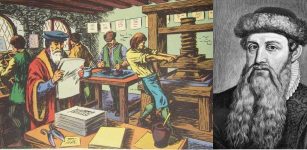 Why Did First Printed Books Scare Ancient Scholars In Europe?
Ancient History Facts | Sep 18, 2021
Why Did First Printed Books Scare Ancient Scholars In Europe?
Ancient History Facts | Sep 18, 2021 -
 Astonishing Secrets Of Legendary Kachinas: Watchers Of The Hopi
Civilizations | Apr 8, 2017
Astonishing Secrets Of Legendary Kachinas: Watchers Of The Hopi
Civilizations | Apr 8, 2017 -
 The Legend Of Little Deer – Interesting Cherokee Tale Of How Disease And Medicine Began, And Why The Native Americans Respect All Life
Featured Stories | May 10, 2017
The Legend Of Little Deer – Interesting Cherokee Tale Of How Disease And Medicine Began, And Why The Native Americans Respect All Life
Featured Stories | May 10, 2017 -
 Why Did Ancient Humans Have Same Sense Of Smell, But Different Sensitivities?
Archaeology | Jan 6, 2023
Why Did Ancient Humans Have Same Sense Of Smell, But Different Sensitivities?
Archaeology | Jan 6, 2023 -
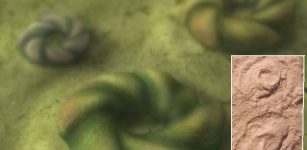 Earth’s First Animals Had Particular Taste In Real Estate
Evolution | May 10, 2023
Earth’s First Animals Had Particular Taste In Real Estate
Evolution | May 10, 2023 -
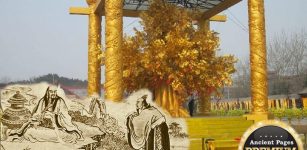 Unravelling The Mystery Of The Yellow Emperor And His Connection To Regulus
Chinese Mythology | Sep 21, 2015
Unravelling The Mystery Of The Yellow Emperor And His Connection To Regulus
Chinese Mythology | Sep 21, 2015 -
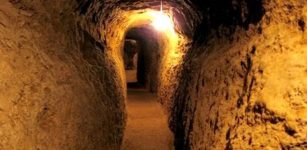 Remarkable Underground City Of Nushabad: A Masterpiece Of Ancient Architecture
Ancient Technology | Nov 17, 2015
Remarkable Underground City Of Nushabad: A Masterpiece Of Ancient Architecture
Ancient Technology | Nov 17, 2015 -
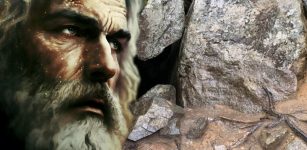 Why Did Sages And Shamans Repeatedly Visit The Mysterious Finnish Pirunkirkko Cave (Devil’s Church)?
Archaeology | Nov 27, 2023
Why Did Sages And Shamans Repeatedly Visit The Mysterious Finnish Pirunkirkko Cave (Devil’s Church)?
Archaeology | Nov 27, 2023



